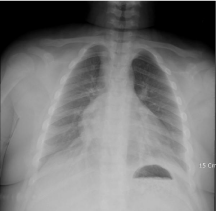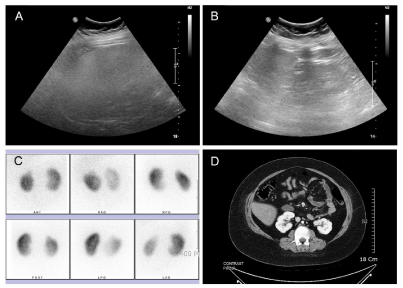
Case Presentation
Austin J Anesthesia and Analgesia. 2019; 7(1): 1078.
Anesthetic Considerations in Relation to a Child with Bardet-Biedl Syndrome: A Case Report
Kim SY, Kim KN*, Lee SM and Kang MS
Department of Anesthesiology and Pain Medicine, Hanyang University Hospital, Republic of Korea
*Corresponding author: Kyu Nam Kim, Department of Anesthesiology and Pain Medicine, Hanyang University Hospital, Republic of Korea
Received: March 27, 2019; Accepted: April 22, 2019; Published: April 29, 2019
Abstract
Bardet-Biedl syndrome is a rare autosomal-recessive disease characterized by central obesity, renal dysfunction, retinal dystrophy, dysmorphic extremities, cognitive impairment, hypogonadism, and endocrine and cardiac abnormalities. We present a case report of general anesthesia in a 7-year-old patient with Bardet-Biedl syndrome and morbid obesity (Body-Mass Index: 55.5kg/m2). Because this syndrome is a multiple organ disorder that affects perioperative care, detailed preoperative examinations such as an echocardiographic examination of kidneys and heart should be performed to assess the current state of patients. In addition, anesthesiologists must be aware of the possibility of difficult airway management, morbid obesity, cardiac disorders and renal impairment.
Keywords: Anesthesia; Bardet-Biedl Syndrome; Obesity; Morbid
Introduction
Since Larurence and Moon first described a family with retinal pigmentation, spastic paraparesis, obesity and cognitive deficit [1]. Bardet-Biedl Syndrome (BBS), as it is now called, has become recognized as an autosomal-recessive disease characterized by central obesity, renal anomalies, retinal dystrophy, postaxial polydactyly, learning disabilities and hypogonadism [2,3]. Secondary diagnostic features include developmental delay, speech delay, diabetes mellitus, dental anomalies, ataxia, and heart diseases. Although BBS is rare, with rates of 1:160000 to 1:1750000 [2,4], there are some important concerns associated with anesthesia that anesthesiologists should be aware of. Therefore, we present a case report of general anesthesia in a 7-year-old patient with BBS and morbid obesity (Body-Mass Index: 55.5kg/m2).
Case Presentation
A 7-year-old male, height 123cm and weight 84kg (Body-Mass Index: 55.5kg/m2), was admitted for laparoscopic sleeve gastrectomy for morbid obesity. The patient had been diagnosed with BBS based on clinical manifestations such as obesity, dental anomalies, visual disorders, hearing loss, mild mental retardation, hypogonadism and a history of surgery for polydactyly. Preoperative evaluations involving laboratory tests, electrocardiography, and ultrasound of the heart were normal. Chest radiography revealed no active lesions in the lungs (Figure 1), but abdominal ultrasound demonstrated fatty liver (Figure 2A) and echogenic left kidney (Figure 2B). Hydronephrosis was not observed. The abnormal contour of the right kidney upper pole in a DMSA renal scan pointed to parenchymal anomalies (Figure 2C), and CT scan revealed lobulated contours of both kidneys, indicating nonspecific findings (Figure 2D). Airway examination yielded a class III Malampati score, and a 4cm mouth opening and 3cm thyromental distance were observed. The patient had a short and thick neck with limited extension. In addition, his dental anomalies led us to anticipate difficult intubation.

Figure 1: Preoperative chest radiography showing absence of active lesions
in the lung.

Figure 2: (A) Fatty liver is observed by abdominal ultrasound examination.
(B) Although an echogenic left kidney is visualized in the abdominal
ultrasound examination, hydronephrosis is not observed. (C) A DMSA renal
scan demonstrates an abnormal contour of the right kidney upper pole, which
points to parenchymal anomalies. (D) Lobulated contours of both kidneys
representing nonspecific findings revealed by CT scan.
After arriving in the operation room, his vital signs were monitored by electrocardiography, and measurement of non-invasive blood pressure and saturation of peripheral oxygen (SpO2). After an emergency airway cart had been prepared in case of difficulty of intubation, 200mg thiopental sodium (5mg/kg of lean body weight) was injected intravenously to induce anesthesia with 7.5mg of cisatracurium (0.15mg/kg of ideal body weight) for muscle relaxation. To facilitate intubation, the upper body and head of the patient were elevated to place the external auditory meatus in line with the sternal notch. Fiberoptic endotracheal intubation was performed without complication, and O2-air-desflurane and remifetanil were used to maintain anesthesia. Pressure-controlled ventilation was used as the ventilator strategy, with 25cm H20 of peak pressure and 17breaths/ min of respiratory rate. 5cm H2 of positive end-expiratory pressure was also applied. Invasive arterial blood pressure monitoring was performed for continuous monitoring of arterial blood pressure. Arterial blood gas analysis revealed pH 7.42, pCO2 36mmHg, pO2 195mmHg, and Base excess 0.7mM at fraction of inspired oxygen 0.5. During surgery, the patient’s status was systolic/diastolic pressure 120-140/70-80 mmHg, pulse rate 75-95 beats/min, and SpO2 99%. At the completion of surgery, 0.16mg of glycopyrrolate (0.004mg/kg of lean body weight) and 2mg of neostigmine (0.05mg/kg of lean body weight) were given to reverse muscle relaxation. After spontaneous respiration and consciousness had recovered, the patient was transferred to a recovery room. During the anesthesia of 195 minutes, estimated blood loss was 50ml, and 1550ml of crystalloid solution was administered. Since there were no specific clinical events after surgery, he was discharged on postoperative day 7, with no complications.
Discussion
Molecular confirmation of a diagnosis of BBS can be helpful in nearly 80% through direct sequencing of the BBS genes, even though it can be diagnosed by laboratory tests alone on the basis of clinical symptoms such as rod-cone dystrophy, polydactyly, obesity, genital anomalies, renal anomalies and learning difficulties [5].
The most critical issue for general anesthesia in BBS is morbid obesity, of which the incidence is 72-92 % [5]. Because difficult intubation is more common in obese patients than in normal ones [6,7], specific attention to airway management is required. A “ramped” position with the patient’s upper body elevated and the head on a horizontal plane between the sternal notch and the external auditory meatus can be useful for intubation in obese patients [8]. Furthermore, the dental anomalies in BBS such as a high-arched plate, dental crowding and hypodontia make intubation more difficulty. In the present case, because difficulties of intubation were expected, fiberoptic endotracheal intubation was performed in a ramped position following adequate preoxygenation.
Since obesity in BBS increases both lean mass and fat content, pharmacokinetic changes of the anesthetic drugs also need to be considered [9]. These changes have an influence on the volume of distribution, plasma concentration and clearance of drugs. Thus, the doses of anesthetics need to be adjusted. With the exception of nondepolarizing neuromuscular blocking agents such as vecuronium, rocuronium and cisatracurium, which are more appropriately administrated according to ideal body weight, lean body weight is the more desirable dosing scalar for hypnotics and opioids including thiopental, propofol, fentanyl and remifentanil [10,11].
Both renal and cardiac impairments should be evaluated in the preoperative period. Echocardiographic studies of 22 patients with BBS revealed cardiac abnormalities such as interventricular septum hypertrophy and dilated cardiomyopathy in 50% of cases [12]. In addition, the incidence of congenital heart disease was reported to be 7% [5]. The frequency of renal abnormalities, which are a leading cause of mortality and morbidity in BBS, has been reported to range from 46 to 53 % [3,5]. Therefore, anesthetics that can affect renal function should be avoided. In this respect, cisatracurium is the most suitable neuromuscular blocking agent due to Hofmann elimination, which is an organ-independent mechanism. Taking all things into consideration, echocardiographic examination of kidneys and heart should be included in the clinical evaluation.
Conclusion
BBS is a rare multiple organ disorder that can affect perioperative care and anesthetic management. Therefore, detailed preoperative examination to assess the current state of patients and appropriate anesthetic management are needed. Anesthesiologists must be aware of the possibility of difficult airway management, morbid obesity, cardiac disorders and renal impairment in BBS.
References
- Laurence JZ, Moon RC. Four cases of “Retinitis Pigmentosa” occurring in the same family, and accompanied by general imperfections of development. 1866. Obes Res. 1995; 3: 400-403.
- Green JS, Parfrey PS, Harnett JD, Farid NR, Cramer BC, Johnson G, et al. The cardinal manifestations of Bardet-Biedl syndrome, a form of Laurence- Moon-Biedl syndrome. N Engl J Med. 1989; 321: 1002-1009.
- Beales PL, Elcioglu N, Woolf AS, Parker D, Flinter FA. New criteria for improved diagnosis of Bardet-Biedl syndrome: Results of a population survey. J Med Genet. 1999; 36: 437-446.
- Forsythe E, Beales PL. Bardet-Biedl Syndrome. In: GeneReviews(R). Edited by Pagon RA, Adam MP, Ardinger HH, Wallace SE, Amemiya A, Bean LJH, et al: Seattle (WA), University of Washington, Seattle University of Washington, Seattle. All rights reserved. 1993.
- Forsythe E, Beales PL. Bardet-Biedl syndrome. Eur J Hum Genet. 2013; 21: 8-13.
- Juvin P, Lavaut E, Dupont H, Lefevre P, Demetriou M, Dumoulin JL, et al. Difficult tracheal intubation is more common in obese than in lean patients. Anesth Analg. 2003; 97: 595-600.
- Shiga T, Wajima Z, Inoue T, Sakamoto A. Predicting difficult intubation in apparently normal patients: A meta-analysis of bedside screening test performance. Anesthesiology. 2005; 103: 429-437.
- Collins JS, Lemmens HJ, Brodsky JB, Brock-Utne JG, Levitan RM. Laryngoscopy and morbid obesity: A comparison of the “sniff” and “ramped” positions. Obes Surg. 2004; 14: 1171-1175.
- Cheymol G. Effects of obesity on pharmacokinetics implications for drug therapy. Clin Pharmacokinet. 2000; 39: 215-231.
- Ingrande J, Lemmens HJ. Dose adjustment of anaesthetics in the morbidly obese. Br J Anaesth. 2010; 105: 16-23.
- Casati A, Putzu M. Anesthesia in the obese patient: Pharmacokinetic considerations. J Clin Anesth. 2005; 17: 134-145.
- Elbedour K, Zucker N, Zalzstein E, Barki Y, Carmi R. Cardiac abnormalities in the Bardet-Biedl syndrome: Echocardiographic studies of 22 patients. Am J Med Genet. 1994; 52: 164-169.